Table of Contents Show
Most RVers hit the road with an RV that won’t be their “forever” camper. They choose something within their budget that gets them on the road.
After traveling for a while, they discover what they do and don’t need and figure out the RV they’d like to get next.
This RV is usually bigger and more expensive. However, we decided to go in the opposite direction.
We downsized from a fifth wheel to a slide in camper.
Why? We’ll tell you!
What Is a Slide in Camper?
A slide in camper, also known as a truck camper, fits in the bed of a truck. You position the trailer so that the truck can back up underneath it.
It “slides in” to the truck bed as the truck moves backward. The camper connects to the truck with four eye bolts or tie-downs, which are already in the four corners of the truck bed.
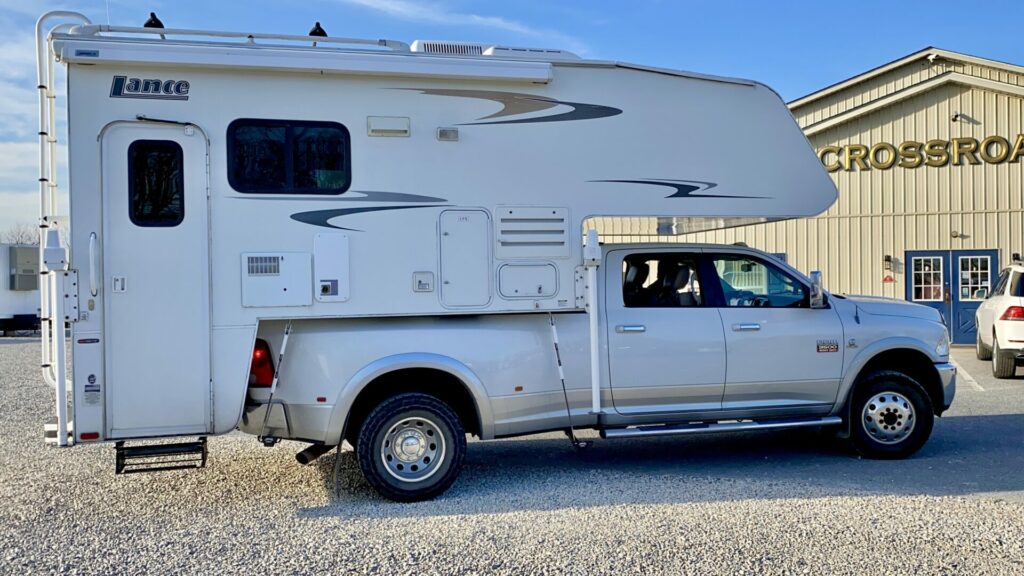
How Heavy Is a Slide in Camper?
The weights of slide in campers vary like the weights of other RVs. You can find a travel trailer that’s 5,000 pounds or 9,000 pounds.
You can find a slide in camper that’s 1,000 pounds or 5,000 pounds. The weight will differ depending on the brand and the amenities inside the trailer.
How Does a Slide in Camper Attach?
First, raise the jacks, so the camper is right above the height of the truck bed. You want to safely back the truck underneath the trailer.
Do this carefully as you don’t want to hit the camper’s jacks. Once your vehicle is in place, lower the camper until it’s resting in the truck bed.
The final step is connecting the camper to the truck with tie-downs and turnbuckles. You’ll have to install eye bolts or tie-downs before you put the trailer in your truck bed.
Some companies install four eye bolts while others install tie-downs. You can choose from frame-mounted, bumper-mounted, or bed-mounted tie-downs.
Then you’ll need turnbuckles to connect the anchors on your camper to the tie-downs on your truck. You can get basic turnbuckles, ones with tension indicators, or lever-action turnbuckles.
Check with the camper manufacturer about which turnbuckles you should use in conjunction with your tie-downs.
Keep in Mind: Looking for a less expensive option for your truck? Consider a Popup Truck Camper!
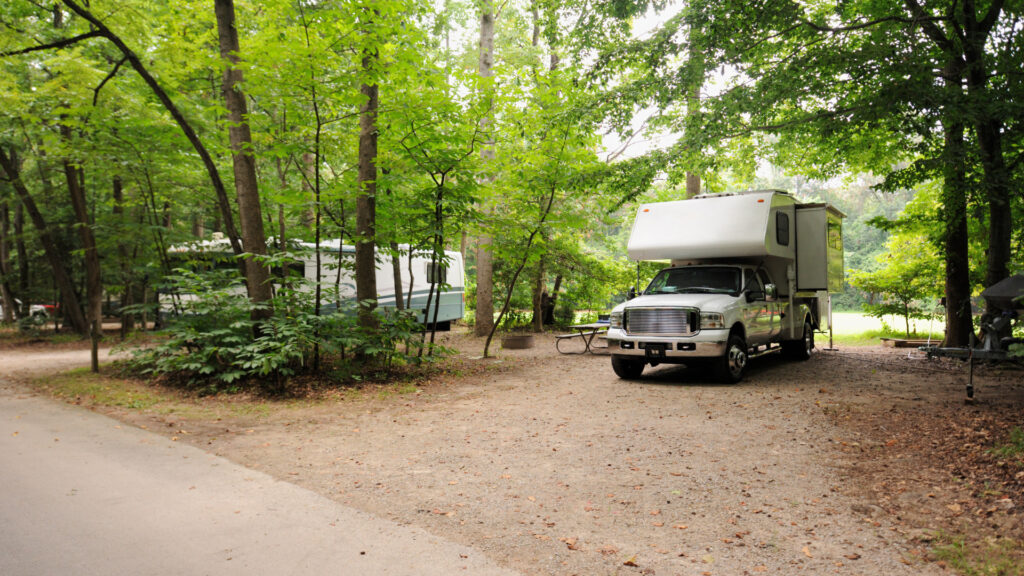
Why We Downsized to a Slide In Camper
You may think it doesn’t make much sense to go from a large fifth wheel to a slight slide in camper. Usually, RVers buy in reverse and go bigger once they’ve been on the road for a while.
However, here are a few reasons we chose to downsize.
We’re No Longer Full-Time RVers
We loved the space of a fifth wheel while full-timing. Fifth wheels provide abundant living space and storage solutions, and they feel like a home with residential touches and high ceilings.
Still, now that we’re not traveling full-time, it made sense to downsize. Sometimes going smaller is advantageous.
We can easily visit the grocery store without unhooking. We can scoot around National Parks without worrying if we’ll fit. Additionally, setup and tear-down don’t take nearly as long.
More Remote Camping Possibilities
We love to boondock and get off-grid. Now we can go further and travel to more remote locations with a slide in camper than we could with a fifth wheel.
We have high clearance with the truck and don’t have to worry about scraping or dragging the RV. The truck suspension is ideal for off-road travel, while most fifth wheels need expensive upgrades.
Less Maintenance
There are no slides to maintain, fewer seals to examine, and fewer moving gadgets to go wrong. A slide in camper is much easier to take care of than a fifth wheel.
Since we’re not traveling full-time, the trailer will also receive less wear and tear. Truck camper manufacturers build them to be durable, so we know we have a camper that will last us for a long time.
Can Travel Faster and Farther
Like the more remote camping opportunities, we can drive faster to get farther than before. Typically, RVers with towable campers travel 55-60 MPH on the interstate. This is to get the best fuel efficiency, and driving slower is safer.
With a slide in camper, we can move normally. Also, since setup and tear-down are much faster, we can travel between locations more quickly.
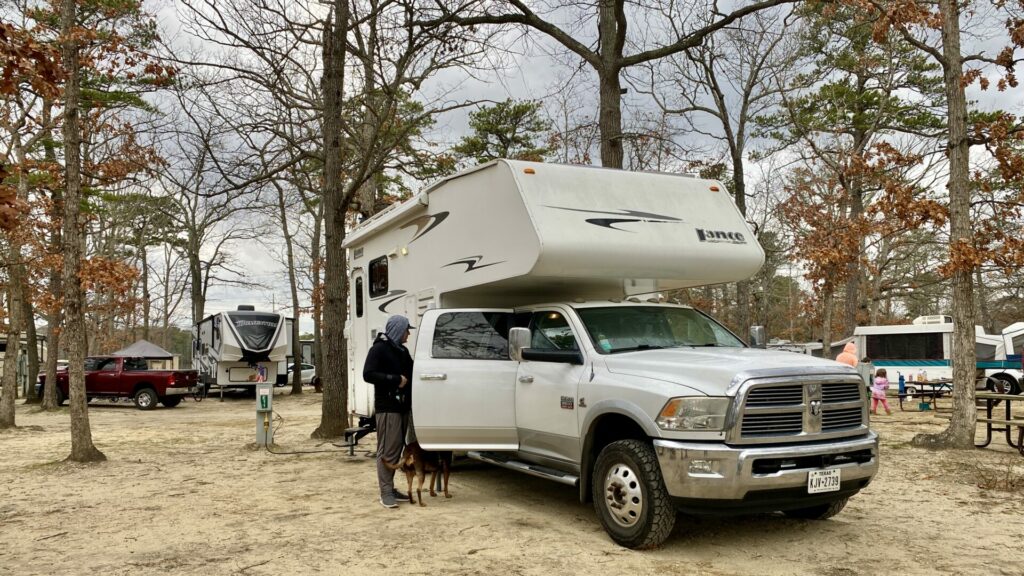
Flexibility
With a slide in camper, we can quickly attach and detach. It doesn’t take 30-45 minutes to set up or tear down. We can be more flexible with where we stay and when we leave since the process doesn’t take as long.
We also have full use of the truck bed once we detach. This means we can visit a Home Depot without figuring out where everything will go. We can transport bikes easily or take kayaks out to a lake.
Keep in Mind: No matter what kind of RV you have, it’s important to know how tall it is. Learn Why You Need To Know Your Total RV Height Clearance and how to measure it by clicking the link!
Can Take More Detours
We’ve already seen the lower 48 states, so now we can explore even further. Traveling through Canada or Mexico or heading to Alaska isn’t as daunting with a slide in camper. We can also make last-minute decisions.
Maybe we want to see a weird roadside attraction, stop in a town that wasn’t in our plans, or drive through a city and grab lunch. We couldn’t do this with a fifth wheel.
There are too many tight turns, low clearances, and narrow roads. Traveling with an extensive RV requires route planning. Now we can go anywhere we want and change plans in an instant.
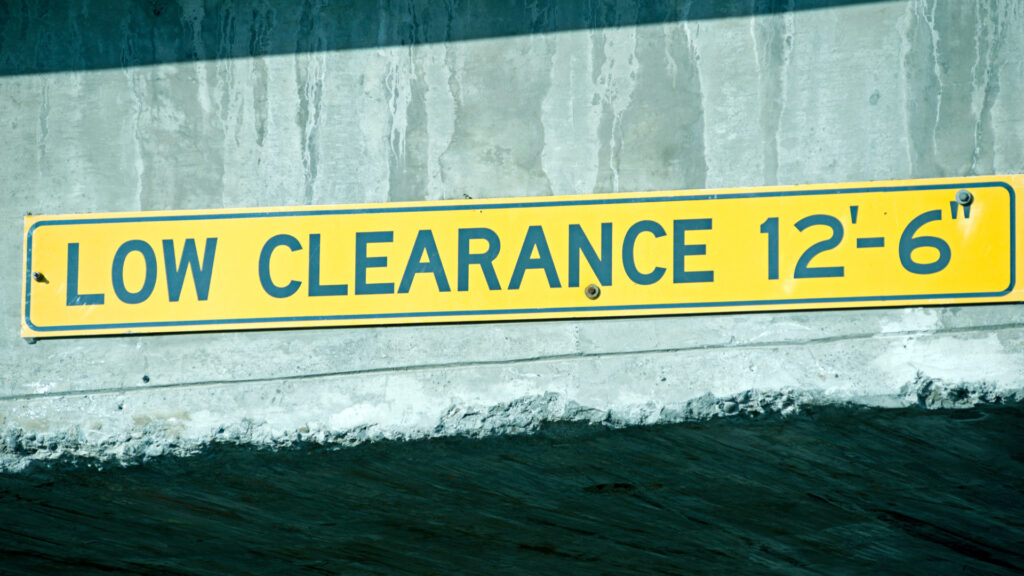
Fewer Fees
Everything is cheaper with a slide in camper. From registration to the insurance, the initial fees are minor compared to what we had to pay for the fifth wheel. In addition, fuel, tolls, and other traveling expenses are cheaper.
We get better fuel mileage with a slide in camper than we did with a fifth wheel, and we don’t have extra axles for additional charges on toll roads.
What Did We Do With Our Fifth Wheel?
Like most RVers who change rigs, we sold our fifth wheel. Some people use RV Trader; others use Facebook Marketplace. Sometimes word gets around among friends and acquaintances.
Another option is to trade in an RV to purchase another one. You lose money when you do this, but it makes the transition more manageable when you can move your stuff directly into the new rig.
Pro Tip: If you’re looking to sell your RV fast, we have a few tips for you. We Sold Our RV in Under 30 Days: Here’s How!
Onto Bigger Adventures in a Smaller RV
Although our RV is smaller, we believe incredible experiences are ahead. Instead of limiting us, our slide in camper will open doors to new opportunities.
We feel like we have very few restrictions except for a smaller living space. Going from a fifth wheel to a slide in camper is challenging, but we’re on to bigger and better things!
Have you ever considered downsizing?




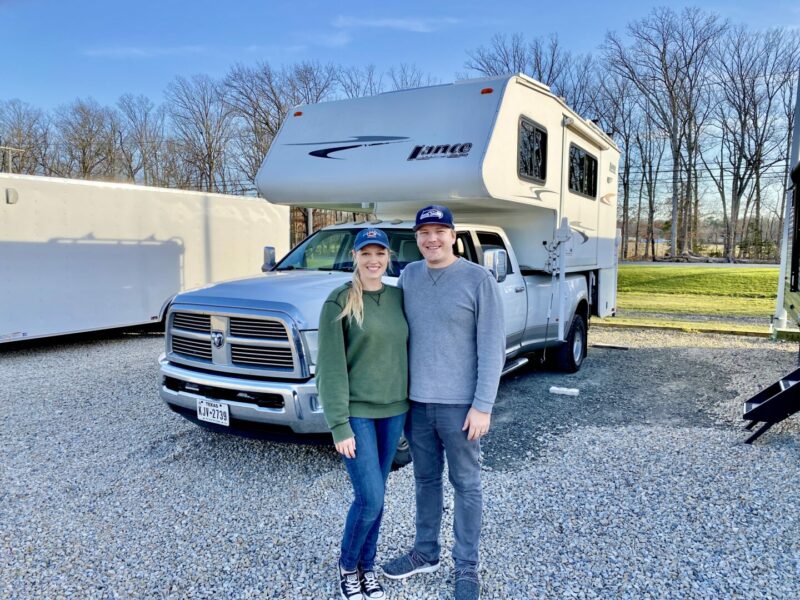

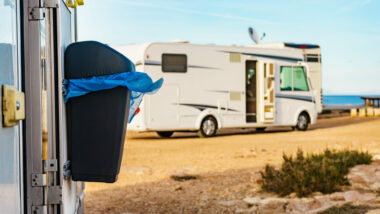
Hi Jason & Rae,
We too are considering downsizing to a truck camper. We currently have a 2021 GD Solitude 375 res. We don’t full time but we do live in it in the winter months to get away from the cold. We have found that it’s just too big for us. We want the flexibility of a smaller camper. We have owned a pop-up slide in truck camper in the past & loved it for weekends & week long trips. It was very small, it fit into our Toyota Tacoma. The model we are looking for is the Lance 1172. We have a F450 that it will slide into.
I’m curious to hear about your adventures in your new slide in. We are planning on selling our 5th wheel early spring & then start the search for our slide in.
Best of luck to you both!
Lorri & Steve Roth
Do some campgrounds not allow truck campers?are they allowed in thousand trails Rv parks?